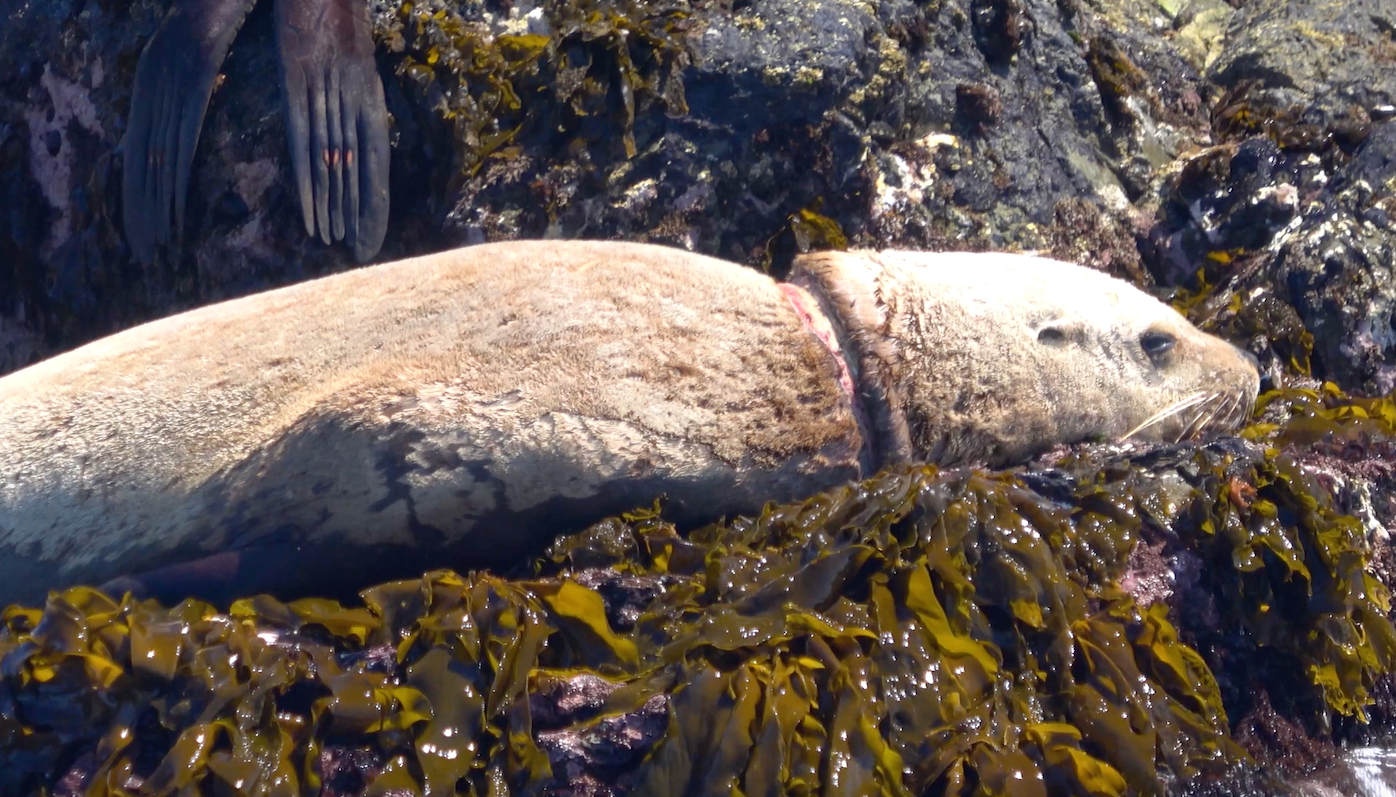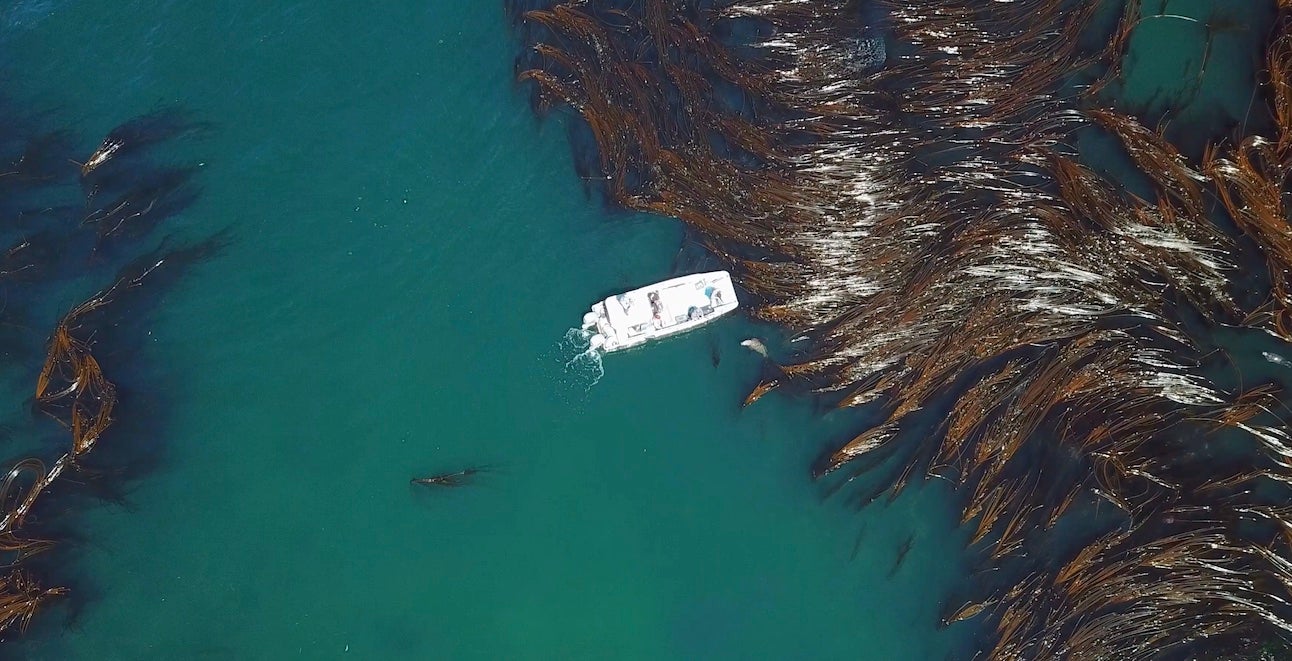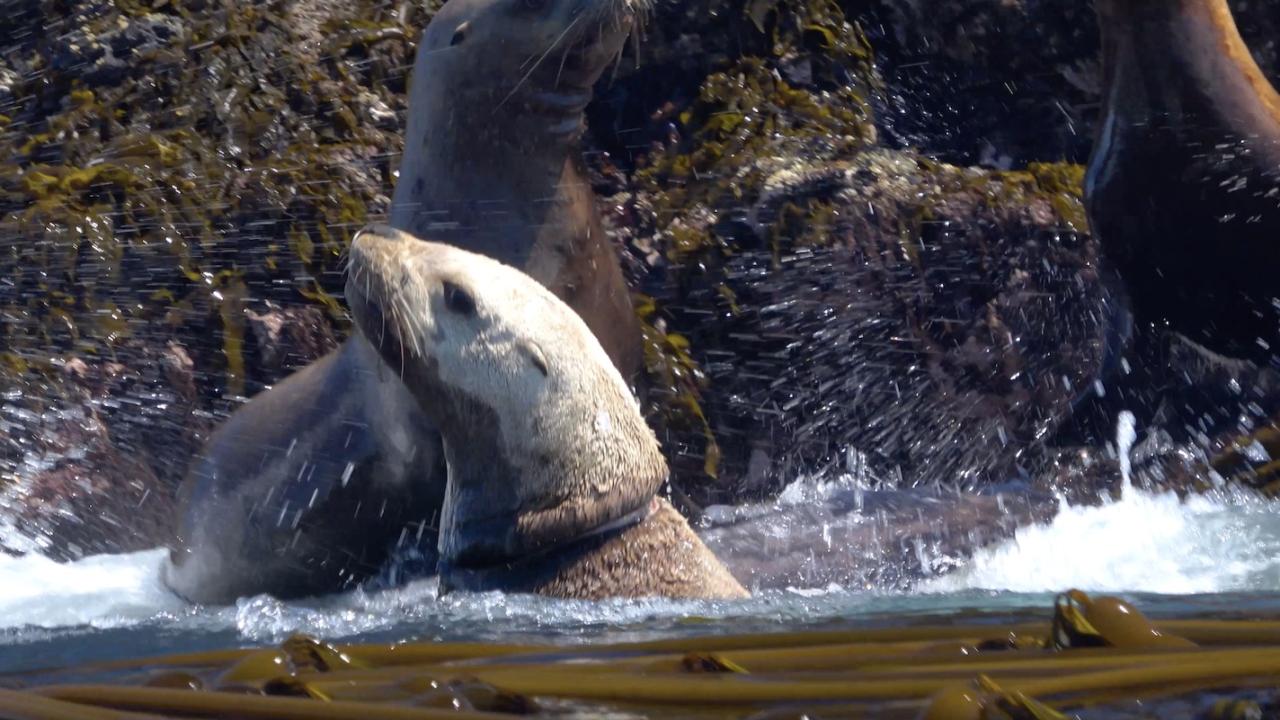When a big male Steller sea lion was spotted near San Juan Island with a plastic packing strap slicing deep into his neck, the only chance to save him was to launch a risky rescue mission. Footage of that dramatic operation is now public with the latest episode of Salish Sea Wild.
The wildlife documentary series about the Salish Sea is produced by the SeaDoc Society, a program of the UC Davis School of Veterinary Medicine. This episode puts you out on the water with the team as they work to sedate and free the 500-pound animal while battling huge tides, dangerous currents and jagged rocks.
“This was a remarkable operation,” said Bob Friel, who filmed the event for SeaDoc Society. “To have any chance of saving this sea lion’s life, everything had to go right: the teamwork, the timing and even the animal’s reaction to our efforts. There were some really tense moments.”
The San Juan County Marine Mammal Stranding Network, run by The Whale Museum, is authorized by NOAA Fisheries as the county’s go-to organization for stranded and injured marine mammals.
After whale watchers reported the wounded Steller sea lion, which is a protected species, surveys determined that the entanglement would be lethal without intervention. A team of professionals from The Whale Museum, SR3 and the SeaDoc Society was given approval by NOAA to launch a mission to try to remove the plastic strap and save the animal’s life.

The right team at the right time
Twelve crew members (including two wildlife veterinarians) on three research vessels located the animal and darted him with tranquilizers. The boat teams, supported by an aerial drone, had to track the sea lion as it swam through a rocky kelp forest until the medicine took effect.
Wildlife veterinarians Joe Gaydos of the SeaDoc Society and Michelle Rivard of SR3 agree that this type of work is never easy, but not responding would have meant the animal would surely die.
“We were lucky to have the right team that could do this, the permits, and all the right conditions,” Gaydos said.
The sedation ensured the animal could be safely handled while remaining conscious enough to breathe on its own. One boat approached slowly and cut the plastic packing strap — the kind you’ll commonly find on boxes and packages.
After the strap was removed, it revealed a deep wound that was close to vital parts of the neck. The team administered medications to reverse the sedation and then monitored the animal from a distance. Within minutes, the sea lion swam slowly back to the small island where it had been sleeping and hauled himself out of the water.

Reminder: Cut plastic straps before discarding
In the days and weeks after he was disentangled, the sea lion was observed acting normally and socializing with other sea lions near Whale Rocks, the site of the response.
That plastic strap found its way into the water and around the neck of a marine mammal by a simple act of human carelessness. But the process of removing it required three boats, a drone and 12 professionals using specialized equipment to complete a deeply collaborative and complex mission. It’s a reminder to us all to cut all plastic straps and everything else that could create an entangling loop before discarding them.
You can help marine mammals, too. If you see an injured, stranded or dead marine animal, please call NOAA’s West Coast Marine Mammal Stranding Network: 866-767-6114. In British Columbia, call 800-465-4336.
This story was originally posted by SeaDoc Society, a program of the UC Davis School of Veterinary Medicine, at www. seadocsociety.org.
Media Resources
Justin Cox is the SeaDoc Society’s communications manager at UC Davis. Contact him at 530-219-5227, jcox@ucdavis.edu.
